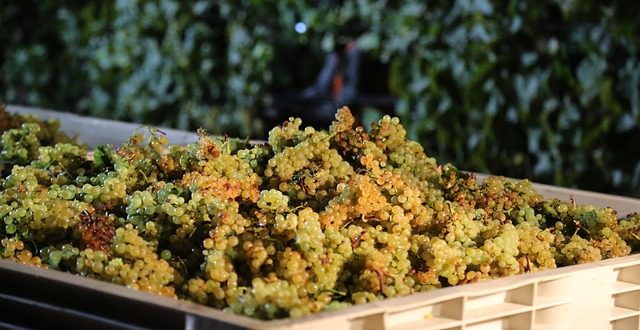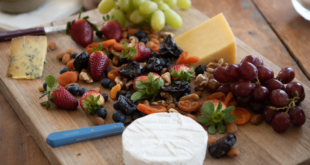For most wine producers, late summer and autumn represent the beginning of their ‘new wine creation’. More importantly for the smaller independent grower, a successful grape harvest is also a time to breathe a great sigh of relief. Nature has been a close friend and not their worst enemy, for nature has a way of providing many an upset. Hail, heavy rain and frost just before harvest can destroy the ripened fruit hanging heavily on the vine. Harvest timing is crucial. Leave it too long and you risk bad weather, gather too early and the grapes have not yet developed to their maximum ripeness. Even bad weather earlier in the season can bring havoc to the crop, as in April 1991 in Bordeaux. Night time temperatures dropped to minus 11 degrees bringing complete devastation to the vines. No wine, no vintage!
To many producers, their complete livelihood relies on the success of the wine they create each year and the continuity of quality, volume and style they have worked so hard to achieve, is paramount. This is the fundamental difference between ‘real wine’ and wine made from ‘industrialised production’, so no wonder there are many ‘wine harvest festivals’ to celebrate this occasion!
Harvest Seasons
Wine harvests can start as early as July in some countries, but in most Northern Hemisphere vineyards, the beginning of August to late October is the time when the grapes have reached the optimum balance of acidity, sugar and tannin. At one time wine makers used to rely on tasting the grapes to gauge if this exact stage had been reached. I know some that still do and it is an art based on experience from past generations. Now of course there are more scientific methods to rely upon, but the decision of when to begin the harvest is still down to the grower.
In the majority of vineyards situated in the Southern Hemisphere, harvesting takes place between the months of February and April as in certain parts of Australia and New Zealand, but can be as late as June in some areas.
Picking by mechanical methods of course is the norm today, but in some vineyard locations this is not always possible, also some growers still have a preference to pick their crop by hand.
It is hard work in a vineyard, I know, I’ve done it! Sounds glamorous and full of adventure and in many ways it is. If you keep looking down and not at the rows of vines in front of you, it’s not so bad, and when you finish each day you have wine and local food to look forward to. [Some regional dishes that have been created for harvest time in many ‘wine countries’ have become classics such as ‘Coq au Vin’ and ‘Boeuf Bourguignon’ in France]
Tradition
At a ‘vendange’ [wine harvest] in the Languedoc of southern France, I remember the old and much dented Citroen CV van winding its way up the furrowed track early in the morning mists, bringing hot coffee and freshly baked croissant for us, and discovered the delight of how ‘Pain au Chocolat’ came to be created, in the northern Chablis vineyards of France’s Burgundy region.
Much of the time it was necessary to light braziers around the rows of vines to stop the night frost from settling upon the grapes. So at first light, on the dying embers of the smouldering fires, the workers would toast their newly baked bread delivered to them fresh each morning. They would melt locally made bitter chocolate in battered skillets over the heat and dip the crisp toasted bread in this rich molten treat, then into their hot strong coffee. This with a nip of ‘eau de vie’ [distilled wine brandy] would set them up for the next grape gathering session until lunch. This ‘continental breakfast’ invention still forms the backbone of the French traditional start to the day.
Festivals
Most wine harvest festivals will commence with a service in the village church, followed by colourful processions through the streets with tractors laden with flowers and pickers in traditional costume. Wine and food dominate with impromptu banquets set in cobbled courtyards and town squares, everyone cooks and brings dishes to share. Band members with instruments that have long seen better times, playing what seems to be a different tune for each, but no one cares, as it all goes towards the atmosphere of thanks and celebration of a wine harvest year successfully completed.
So each time you open a bottle of your favourite wine, just think of all that it represents and capture the ‘festival experience’. Try our Burgundy classic recipe for ‘Coq au Vin’ [Chicken in red Wine] share with friends and some good red Burgundy wine on an autumn evening or for lunch, a harvest style banquet!
Alan Hunter for Vino Clubs and always remember to drink responsibly!
Recipe for Coq au Vin – For 6 people
Ingredients
1 large pack of chicken thighs [enough for good 6 portions], 18 small onions of shallots – peeled, 18 button chestnut mushrooms – wiped not soaked in water!, Pack of ‘cooking bacon’ cut into chunks [available at most supermarkets], I bottle of red wine [general Burgundy or other ‘Pinot Noir’ will do], ½ pint chicken stock, Bay leaf, sprig of thyme, fresh parsley – chopped, 2 cloves of garlic – crushed, Tablespoon of butter, Tablespoon of plain flour, Sunflower or ground nut oil, Freshly milled salt and black pepper, Lots of fresh ‘rustic style’ bread
Method
- Brown the bacon in a thick bottomed pan [big enough to take all the chicken thighs] with the onions and garlic in the butter and oil, remove and set aside.
- Place the chicken thighs in the same oil and butter in the pan, for maximum flavour, and turn until brown all over.
- Sprinkle with the flour until coated and gently turn until lightly browned.
- Add the thyme and bay leaf and cover with the wine and simmer gently for about 1/2 hour – the wine will reduce by half its original quantity
- Top up with some of the chicken stock when required so as to keep the sauce a medium thick consistency
- Add the bacon and onions and gently simmer for a further ½ hour, then add the mushrooms for only 5 more minutes, garnish with the chopped parsley
- Note: You can also finish with a ‘nip’ of brandy in the sauce if feeling extravagant!
- Serve with the bread for dipping and if you wish – Dice a couple of large potatoes into small cubes and shallow fry in little butter and olive oil until browned and crispy. Sprinkle with chopped fresh parsley and add buttered French beans, carrots and peas mixed together – A dish on its own!
 Vino-Club For Wine Lovers
Vino-Club For Wine Lovers






